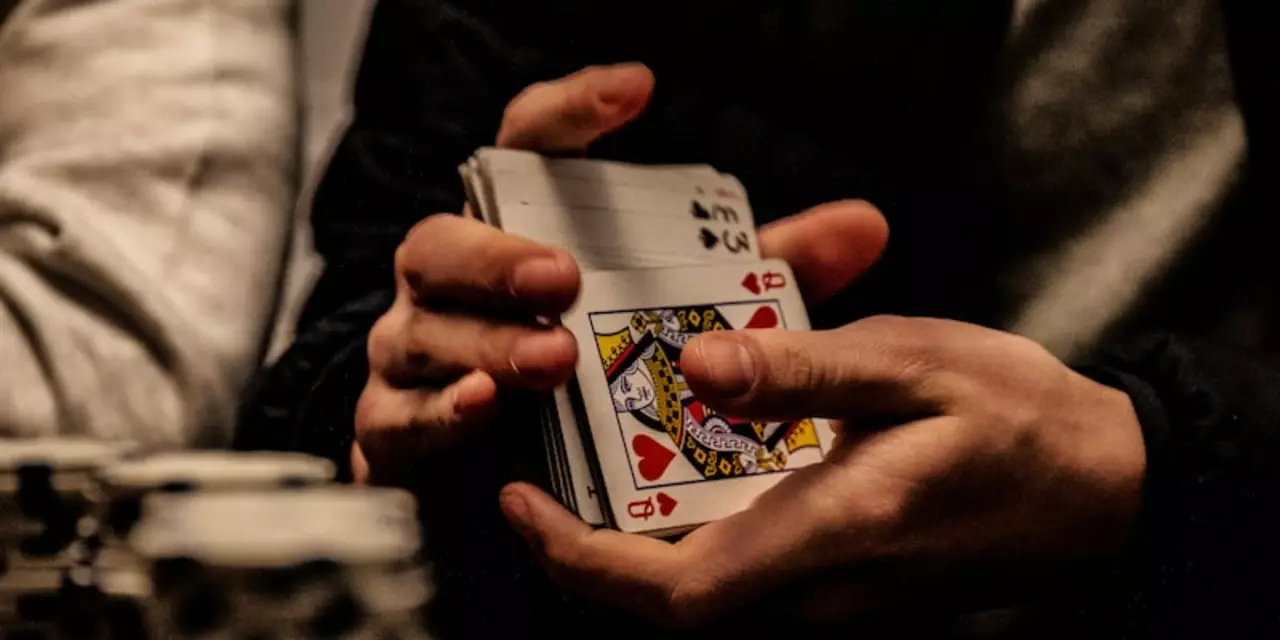
Exploring the Different Ways Poker Cards Communicate to Players
Playing poker is a complex game that requires players to use a variety of strategies and tactics in order to win. One of the most important aspects of the game is how players use the cards they are dealt. Cards can “talk” in a variety of ways, allowing players to gain an advantage over their opponents. This article will explore the different ways poker cards communicate to players.The first way poker cards communicate is through their suit. Each card has four suits, which are usually represented by symbols. These symbols can give players clues about the potential strength of their hands. For example, if a player has a hand with cards of the same suit, they may be more likely to have a strong hand.
The second way poker cards communicate is through their value. Each card has a numerical value, and players can use these values to determine the strength of their hands. For example, a pair of Aces is usually considered to be a strong hand, while a pair of twos is usually considered to be a weak hand. Players can use this information to decide whether or not to raise or fold.
The third way poker cards communicate is through their position in the deck. Depending on the game being played, the position of the cards can provide players with information about the possible strength of their hands. For example, if a player is dealt a strong hand in the middle of the deck, they may be more likely to raise or call, while a weaker hand in the same position may encourage them to fold.
Finally, poker cards can communicate through the actions of other players. By observing how other players are betting, players can gain valuable insight into the strength of their hands. For example, if a player is betting aggressively with a weak hand, they may be more likely to fold if a player raises.
By understanding how poker cards communicate to players, players can gain an edge in the game. By using the information provided by their cards, players can make more informed decisions and increase their chances of winning.
Using Visual Cues to Read Your Opponent's Hand in Poker
Poker is a game of strategy and reading your opponents. One of the most important skills to have in poker is being able to read the cards that your opponents are holding. This will help you make better decisions at the table and increase your chances of winning. But how do you read cards in poker?One way to read your opponent's hand in poker is by using visual cues. When a player holds their cards, they will often give away clues as to what cards they are holding. For example, if they keep glancing at their cards, they may be holding a powerful hand. If they seem to be avoiding looking at their cards, they may be trying to hide a weak hand.
Another way to read your opponent's hand is by looking at their betting patterns. If your opponent is betting with more aggression than usual, they may be bluffing and trying to steal the pot. If they are being more passive, they may be holding a strong hand and trying to get a value bet.
Finally, you can also look for physical tells when playing poker. If your opponent is sweating or fidgeting, they may be feeling uncomfortable with their hand and trying to hide it. If they are relaxed and confident, they may be holding a strong hand and trying to get value from it.
By using these visual cues, you can gain insight into your opponent's hand and make better decisions at the table. Just remember that not all players will give away their hand in this way, so it is important to pay attention to the betting patterns and physical tells of your opponents. With practice, you can become a skilled poker player who knows how to read their opponents' cards.
How to Take Advantage of Your Opponents' Betting Patterns in Poker
When playing poker, one of the most important skills to master is reading your opponents’ betting patterns. By knowing what types of bets they are likely to make and why, you can gain an advantage over them by making more informed decisions during the game.One way to do this is to pay attention to the type of cards your opponents are betting on. If they are consistently betting on low cards, they could be trying to bluff their way to a win. Similarly, if they are betting on high cards, they may be trying to take advantage of their strong hand. By knowing these patterns, you can adjust your own betting strategy in order to counter their moves.
Another way to take advantage of your opponents’ betting patterns is to observe how they respond to different types of bets. If they seem to be particularly aggressive when it comes to betting on low cards, then you can use this knowledge to bet higher on those same cards. On the other hand, if they seem to be more passive when it comes to betting on high cards, then you can use this knowledge to make smaller bets on those same cards.
Finally, you can also use your opponents’ betting patterns to make decisions about when to fold or call. If they are betting heavily on low cards, then you can use this as an indication that they may be hiding a strong hand. In this case, it may be wise to fold and avoid risking your chips. On the other hand, if they are betting lightly on high cards, then you can use this as an indication that they may be bluffing. In this case, it may be wise to call and see what they have.
By paying attention to your opponents’ betting patterns, you can gain an advantage over them and increase your chances of winning. While it may take some practice and observation to become skilled in reading your opponents’ betting patterns, the rewards are worth it. So the next time you sit down at the table, remember to pay attention to how your opponents are betting on the cards and use this knowledge to your advantage.
Understanding the Psychology of Poker: How Cards Speak to Players
Card games are incredibly popular in the world of poker and for good reason. While it may seem like a game of luck, there is a lot of psychology that goes into winning a hand. When playing poker, the cards you are dealt are your only real chance at success. It is important to know how to read the cards, what they mean, and how they can affect your opponents. This article will discuss how cards “talk” in the game of poker and how understanding the psychology of the game can help you come out ahead.To understand how cards “talk” in poker, it is important to understand the basics of the game. Poker is a game of strategy, and reading your opponents is a key part of success. Every card has a different value, and as the game progresses, the value of the cards can change. It is up to the players to read their opponents, pay attention to the board, and understand how the cards can be used to their advantage.
One thing to keep in mind when playing poker is that the cards are not the only thing that will tell you what your opponents are thinking. Players will also communicate their thoughts through their body language and facial expressions. In addition, the betting patterns of players can reveal a lot about their strategies. Paying attention to these subtle cues can help you gain insight into your opponents’ thoughts and increase your chances of winning.
In addition to reading your opponents, it is also important to understand the value of certain cards. The strength of a particular card can be determined by its rank and suit. For example, a suited Ace-King is a very strong hand and can be used to bluff or to make a strong bet. On the other hand, a low-value card like a 2 or 3 can be used to make a safe bet and hide your true intentions. Understanding the value of the cards can help you make the best decision in any given situation.
Finally, it is important to remember that poker is a game of luck. No amount of reading opponents or understanding card values can guarantee a win. However, by understanding the psychology of poker and how cards “talk”, you can increase your chances of success. With practice and patience, you can develop the skills necessary to read your opponents and make the best decisions.
